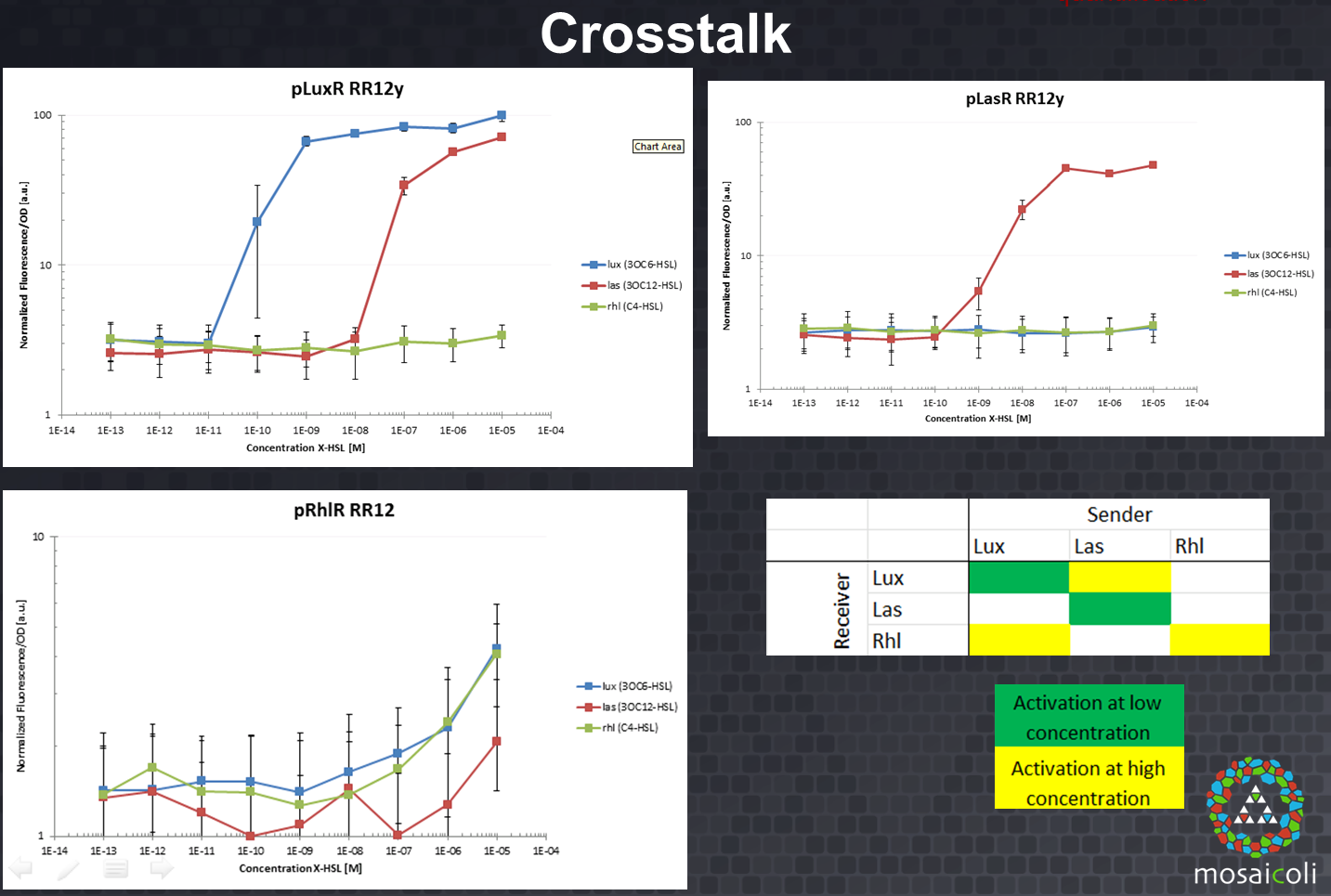Team:ETH Zurich/labblog/20140908meet
From 2014.igem.org
(Difference between revisions)
(→Week 16) |
|||
| Line 12: | Line 12: | ||
{{:Team:ETH_Zurich/tpl/topbutton|#top|top}} | {{:Team:ETH_Zurich/tpl/topbutton|#top|top}} | ||
| - | {{:Team:ETH_Zurich/tpl/rmbutton|silver}} | + | {{:Team:ETH_Zurich/tpl/rmbutton|silver|week16}} |
<html> </article></html> | <html> </article></html> | ||
Revision as of 01:09, 8 October 2014
Week 16
Monday 8th September
- We have enough crosstalk results to decide which pair of quorum sensing systems we will use. Cross-talk experiments setup is described in this article . Until now we thought Lux was crosstalking too much with las and tried to improve the pair Las-Rhl. However we realized today that Rhl is difficult to improve and that our induction curves of Las and Lux are good enough, since Las is never responding to lux-HSL and we only have to be in a range of las-HSL concentrations that is below 10 nM to avoid Lux responding to las-HSL.
- Diffusion experiment (trying to have a correlation between channel length and time of fluorescence, having cells at the end of a channel and adding pure HSL at the other end of the channel, see this article for more details on the setup) : We tried lower concentrations of pure HSL and the wells start shining at different moments, but we still don't have any correlation between channel length and starting time of fluorescence, because our chip seems to be leaky and some wells dried completely. However, this experiment enables us to check that fluorescence appears after a reasonable time and that channel length probably doesn't influence this time too much.
- On the modeling side, we are not able to retrieve diffusion coefficient of HSL from this diffusion experiment but we can use a parameter from literature.
 "
"
